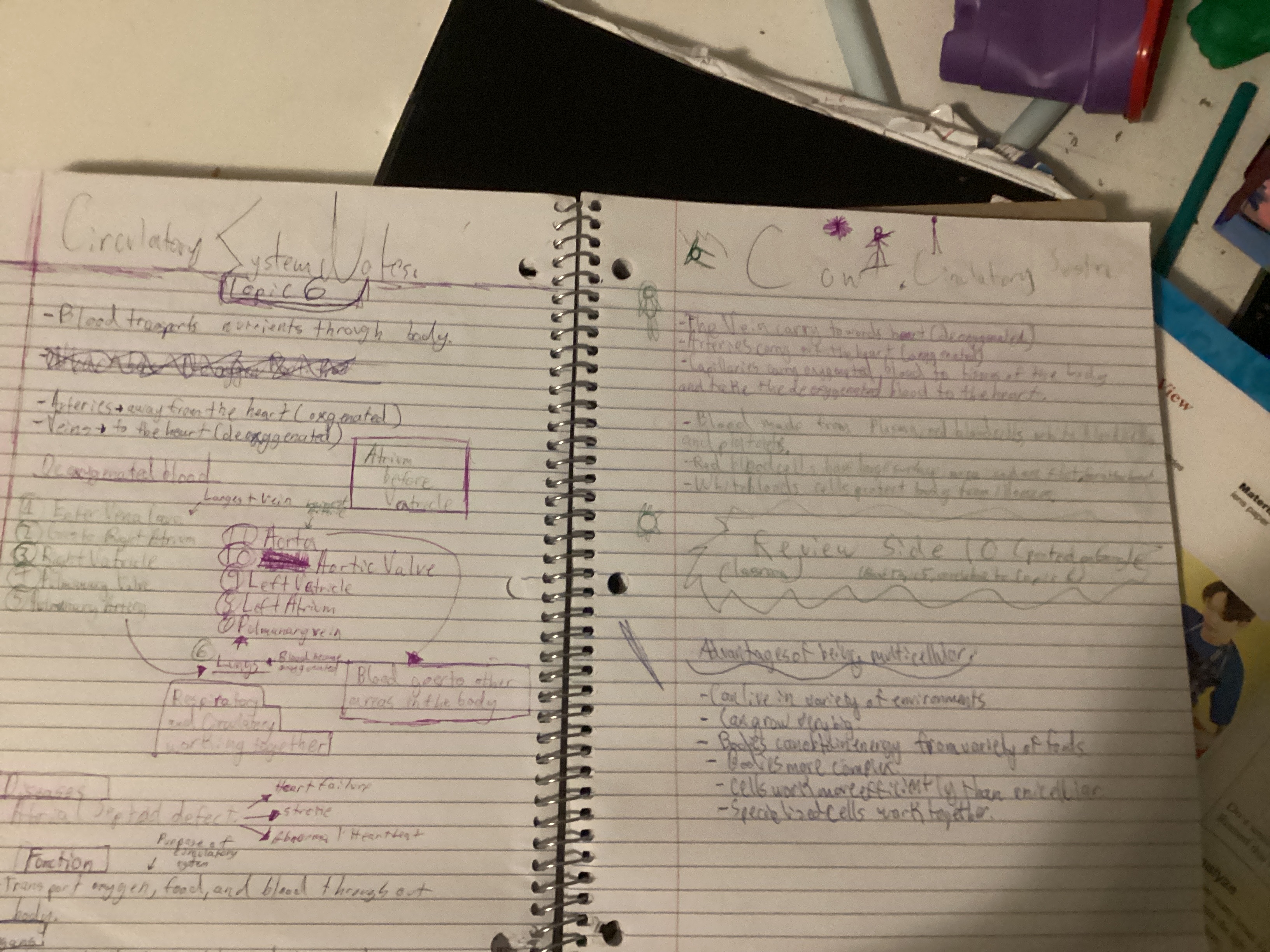Circulatory System Notes

Understand the Problem
The image shows handwritten notes on the circulatory system, diseases, and advantages of being multicellular. The user wants to convert these to a more usable digital format.
Answer
The circulatory system transports oxygen, nutrients, and hormones while removing waste, using the heart, blood vessels, and blood.
The circulatory system transports oxygen, nutrients, and hormones to cells and removes waste products like carbon dioxide. It includes the heart, blood vessels (arteries, veins, and capillaries), and blood (plasma, red blood cells, white blood cells, and platelets).
Answer for screen readers
The circulatory system transports oxygen, nutrients, and hormones to cells and removes waste products like carbon dioxide. It includes the heart, blood vessels (arteries, veins, and capillaries), and blood (plasma, red blood cells, white blood cells, and platelets).
More Information
The circulatory system is essential for maintaining the body's internal environment and protecting it from diseases.
Tips
A common mistake is confusing arteries and veins. Remember, arteries carry blood away from the heart, and veins carry blood back to the heart.
Sources
- How Your Circulatory System Works - Cleveland Clinic - my.clevelandclinic.org
- Your Heart & Circulatory System (for Teens) | Nemours KidsHealth - kidshealth.org
- Circulatory System: Anatomy and Function - Cleveland Clinic - my.clevelandclinic.org
AI-generated content may contain errors. Please verify critical information